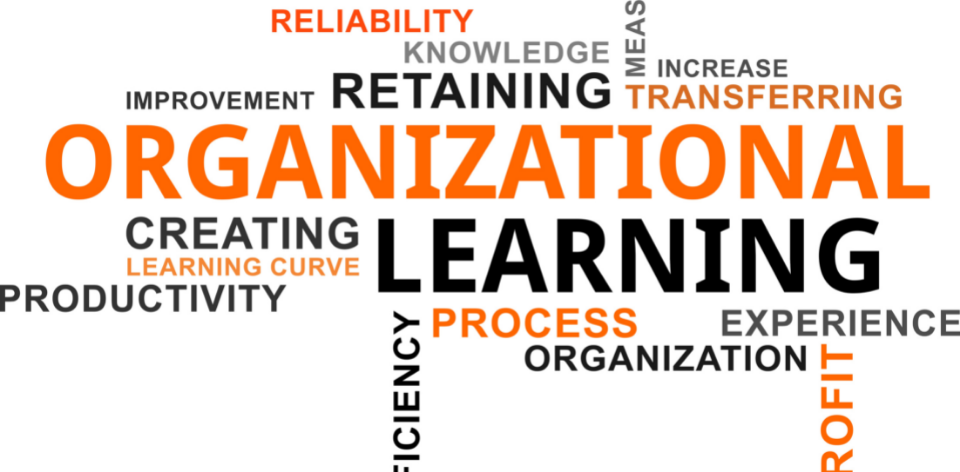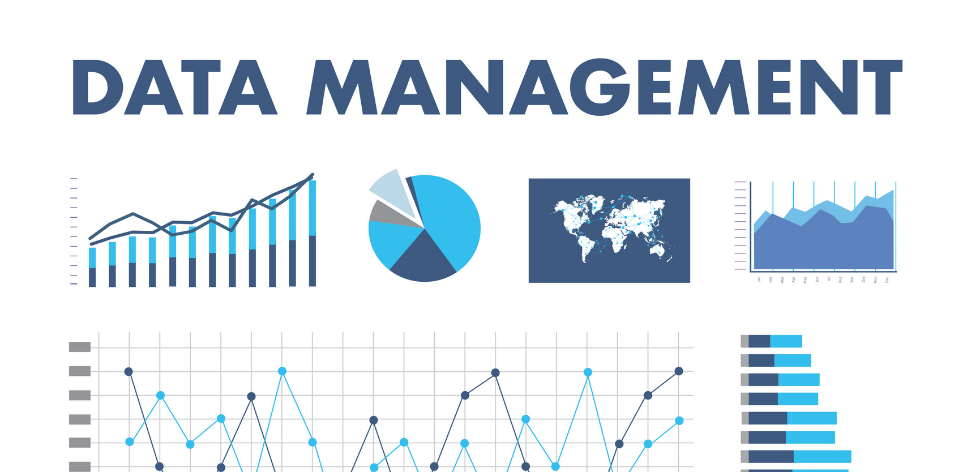“Business intelligence system” is a broad term that refers to the set of processes, techniques, models, processes, and models used by corporate enterprises to analyze an organization’s data. Business intelligence systems give detailed, historical, and current views of organizational operations. It helps make better decision making and efficient management of organization resources such as people, capital, equipment, and information. In this article, we will explain the value of organizational intelligence, how to create it, and also give you examples of several types of software which fit into the BIS paradigm.

- Organizational Intelligence Tools
- Value of Building Organizational Intelligence
- How OI Helps Businesses
- Business Intelligence Tools
- What is a Business Intelligence (BI) spreadsheet?
- What is an enterprise resource planning (ERP) system?
- What is an e-commerce web analytics system?
- What is a customer relationship management (CRM)?
- What is a business intelligence SaaS tool?
Organizational Intelligence Tools

Organizational intelligence is a general concept that refers to the ability of a company to understand and use its data in order to make better decisions. It can help a company be more efficient and effective in how it operates. Using organizational intelligence also helps a company better predict and plan for the future of the company. The more data that is available, and the more it is used by decision-makers, the more it will help a business make better decisions – which will lead to an overall improvement in business performance.
ORGANIZATIONAL INTELLIGENCE…
•Uses data in order to make better decisions
•Plans for the future of the company
•Relies on decision-makers using the data they receive
•Helps improve business performance
Value of Building Organizational Intelligence
Organizational intelligence helps you to do your work better. It also helps you learn how to organize your time and space more. It is the key to success.
Organizational intelligence (OI) can be defined as:
OI = (information + integration + gaps) / time
Here, information is customer and market insights; integration is using this insight to create new products, services, and business models; and gaps are areas of opportunity that can be exploited to build competitive advantage. The value of OI is that it helps you do your work better and exploit opportunities in a timely manner.
OI can be developed by building four key capabilities: acquiring customer insights; using these insights to generate new products, services, and business models; identifying market opportunities for growth through insight-driven experimentation; and executing the resulting ideas quickly and effectively. In addition, companies also have to establish a culture where information sharing is encouraged, and the organization as a whole is open to change.
How OI Helps Businesses
The value of OI has been well documented in practice: it has been shown to be a key driver for successful strategy execution, revenue growth, differentiation from the competition, and the ability to innovate.
OI helps you do your work better by providing insights to make informed decisions. It also helps you exploit opportunities in a timely manner and gain a competitive advantage over others.
In order to successfully execute a BI strategy, organizations need to have a high level of organizational intelligence. This involves having the ability to understand and make use of the internal and external information that is available to them. Key drivers behind successful BI strategy execution are 1) The ability to collect and analyze data effectively, 2) The ability to manage change effectively, and 3) The ability to create a shared vision and common goals.
It increases the likelihood of correctly identifying emerging trends (e.g., for product development), satisfying customer needs (e.g., for customer service), or capturing market opportunities (e.g., for pricing). Organizational intelligence also enables the effective leveraging of customer information across functions, business units, and geographies to allow the integration of multiple perspectives into new products, services, and business models that generate revenue growth.
Business Intelligence Tools
The most critical component of a successful business intelligence system is having a good BI tool. A good BI tool can help form the basis of effective organizational intelligence. Business intelligence tools gather, organize, analyze, and transmit business data supporting the management’s strategic and tactical plans. They are built on a foundation of current and past research and practice.
Business intelligence tools and systems facilitate the processing of organizational data and information, especially financial data. They integrate the business with information science, technology, and operational science. The cross-pollination of business intelligence tools with data analysis helps facilitate an organization-wide business intelligence. Below, we dive into a few different types of software that can be used with a BI tool to create a comprehensive Business Intelligence System.
What is a Business Intelligence (BI) spreadsheet?
A BI spreadsheet is a highly specialized spreadsheet that integrates business data, business intelligence, and mathematical and statistical analysis. It is usually designed for easy analysis and modification.
A business intelligence spreadsheet is a spreadsheet that is used to store data and information about a business. The spreadsheet can be used to track sales, profits, and losses; as well as customer information and contact details. The spreadsheet can also be used to store inventory data, including the type of product, the quantity of the product, and the selling price of the product.
Business intelligence spreadsheets can be used for many different business applications, such as:
Inventory Management and Control
If there is more than one location of the retail store, each location can then have its own inventory spreadsheet that will provide an up-to-date inventory of what products are available at each location; this allows the business owner to know which products need to be shipped from the central warehouse.
Sales Data
If there are multiple salespeople or sales agents, they can each have their own spreadsheet that will provide sales information about the type of product sold, how many were sold, and the total price of each sale. This not only provides accurate data about what is being sold but also allows for sales information to be synchronized across all locations.
Order Forms
If customers are required to fill out order forms before they can purchase any products or services, then the order form itself can be stored in a template spreadsheet. The business owner can create multiple templates for different types of orders, such as wholesale orders or retail orders.
Price Sheets
If there are different price sheets for the different types of products being sold by the business, then each price sheet can be stored in a spreadsheet template file for easy access. This also allows multiple users to open and edit multiple templates at once using our BI spreadsheet feature.
Often, organizations overcomplicate spreadsheets because they have an insufficient business analytics system. Spreadsheets should only be used for displaying and analyzing data in a tabular format and by themselves will not cover all BI usecases. For example, charting capabilities in a spreadsheet are very primitive and inflexible. So although spreadsheets can be an essential part of an organization’s toolbox, it is not recommended to use them in place of proper business intelligence tools.

What is an enterprise resource planning (ERP) system?
An ERP is a set of products and services designed and implemented to run an entire business efficiently. Therefore, ERP can be an important business tool that can improve a company’s efficiency. An ERP system is made up of four key components:
- Integration and Enterprise Resource Planning (ERP),
- Integration and Electronic Data Management (EDM),
- Enterprise Resource Planning Software (ERP Software), and
- Information Technology Assurance (ITA).
These components work together to provide a complete view of the supply chain.
Most ERP solutions today lack modern reporting and dashboard capabilities, so it’s important to note that an ERP by itself won’t give your business a comprehensive set of visual analytics. Therefore, even if an ERP is in use within your organization, it’s still important to use it alongside a business intelligence tool that is capable of visualizing and displaying data in a more interactive manner. A proper data management strategy will allow you to extract data from the ERP and other data sources into a set of actionable insights.

What is an e-commerce web analytics system?
Web analytics systems, also known as web analytics applications, are computer programs designed to collect and present user activity on the internet.
This information is often used to derive the behavior patterns of targeted users and assist in establishing best online practices for businesses.
An e-commerce web analytics system is a software system that helps merchants track and analyze customer behavior on their eCommerce websites. It can help identify areas of improvement for the website, as well as track how effective different marketing campaigns are in driving traffic and sales.
An eCommerce web analytics system typically includes the following five modules: Acquisition, product performance, customer engagement, user behavior, and site search.
Acquisition
Merchants can use an e-commerce web analytics system to track how effective the various acquisition channels are in driving traffic and sales to their websites. This module can help merchants track their marketing campaigns across different channels, such as social media, paid search, and organic search.
Product Performance
Web analytics systems can help merchants identify the products that are most popular with customers by showing which products are getting the most traffic, sales, and customer reviews. Merchants can use this information to adjust their product mix, improve the design of popular products, and make sure the right product information is displayed on their websites.
Customer Engagement
E-commerce web analytics systems can help merchants measure customer engagement with specific products by showing how many times a product page was viewed before purchase, how much time customers are spending on each product page, and even the customer journey from one website page to the next. Merchants can use this information to pinpoint product pages that need improvement, as well as optimize their marketing campaigns and website design for their most engaged customers.
User Behavior
An e-commerce web analytics system allows merchants to track how users are navigating through their website by reporting what products they viewed before leaving a page without making a purchase. Merchants can use this information to identify the pages that need improvement and make improvements to these pages, while still allowing customers who have abandoned a product page to complete their purchase if they return later.
Site Search
An e-commerce web analytics system gives merchants valuable insight into the keyword phrases that customers are using on their website when searching for products. Merchants can use this information to optimize their product pages with the right keywords, which will lead customers directly to the products they are looking for.
How do merchants use e-commerce web analytics systems to improve conversions?
E-commerce web analytics systems give merchants insight into how users are interacting with their websites so they can adjust everything from product design to site navigation to marketing campaigns for maximum conversions.
What is a customer relationship management (CRM)?

Customer relationship management, or CRM, is a business intelligence system that uses sophisticated analytics and databases to understand who buys what, when they buy it, and why. This information helps a business identify its customer base and develop strategies around those users.
In addition, CRM analytics allows businesses to better serve their customers by identifying opportunities in other markets that the company may not have considered. For example, a business may determine that a specific demographic buys more of a particular product than others, allowing the company to market more effectively.

What is a business intelligence SaaS tool?
The convenience of having a BI tool online is having easy access to business intelligence in your web browser. Software as a Service (SaaS) applications such as Paradigm Interactive VisualApps Suite™ provide businesses access to extensive business intelligence capabilities online. This type of software is ideal for any business, especially small business owners who do not have the budget to build their own applications.
Using a SaaS tool allows businesses to manage and maintain all aspects of their business from the comfort of their desk.
An effective business intelligence system is a vital tool in the modern-day world. It can be used for developing strategies around specific demographics or markets not previously considered by the company. SaaS software also makes it easy for small businesses without a lot of capital to get started with BI and give them access to systems they would otherwise have had no way of affording at any price point!